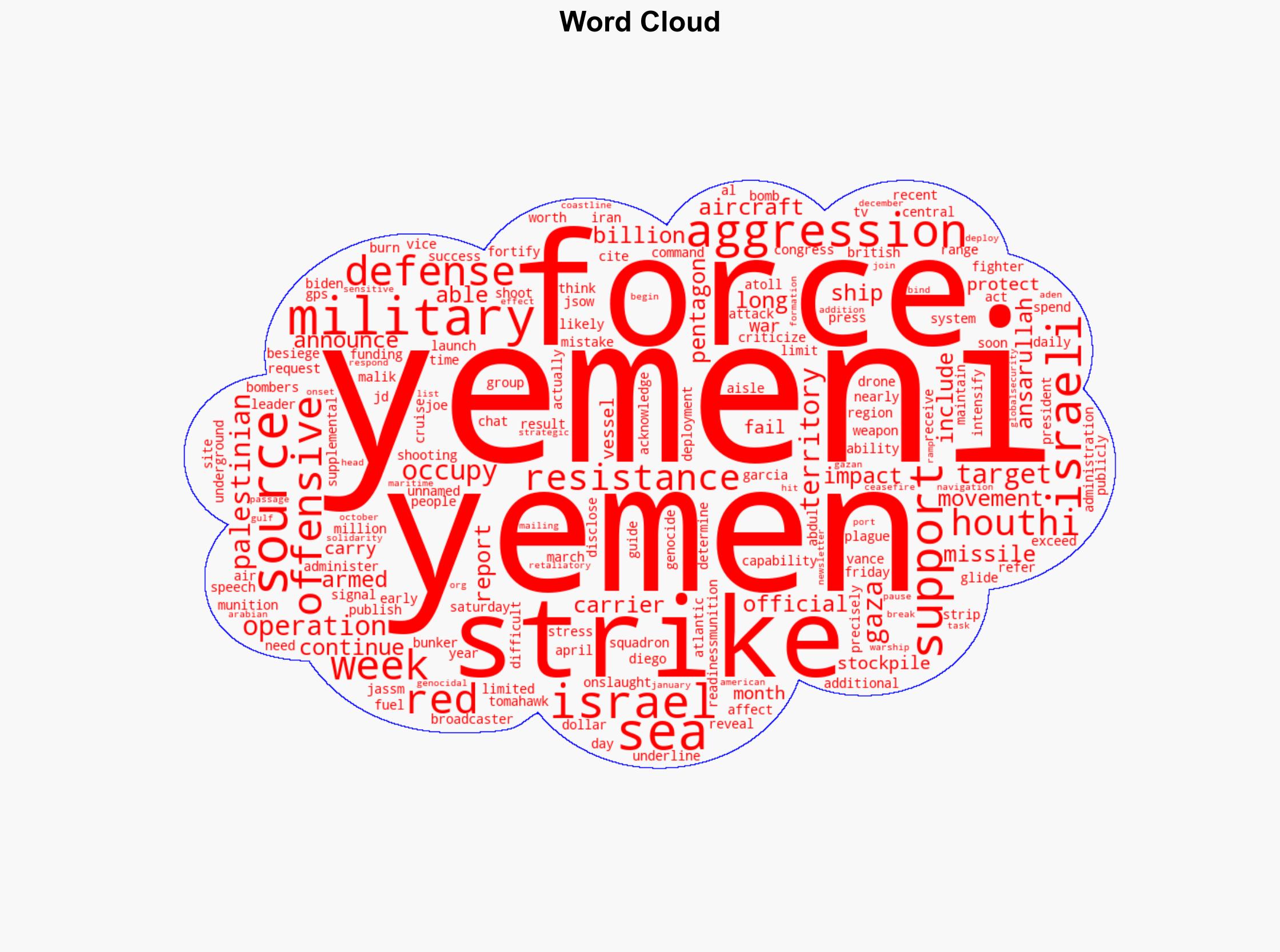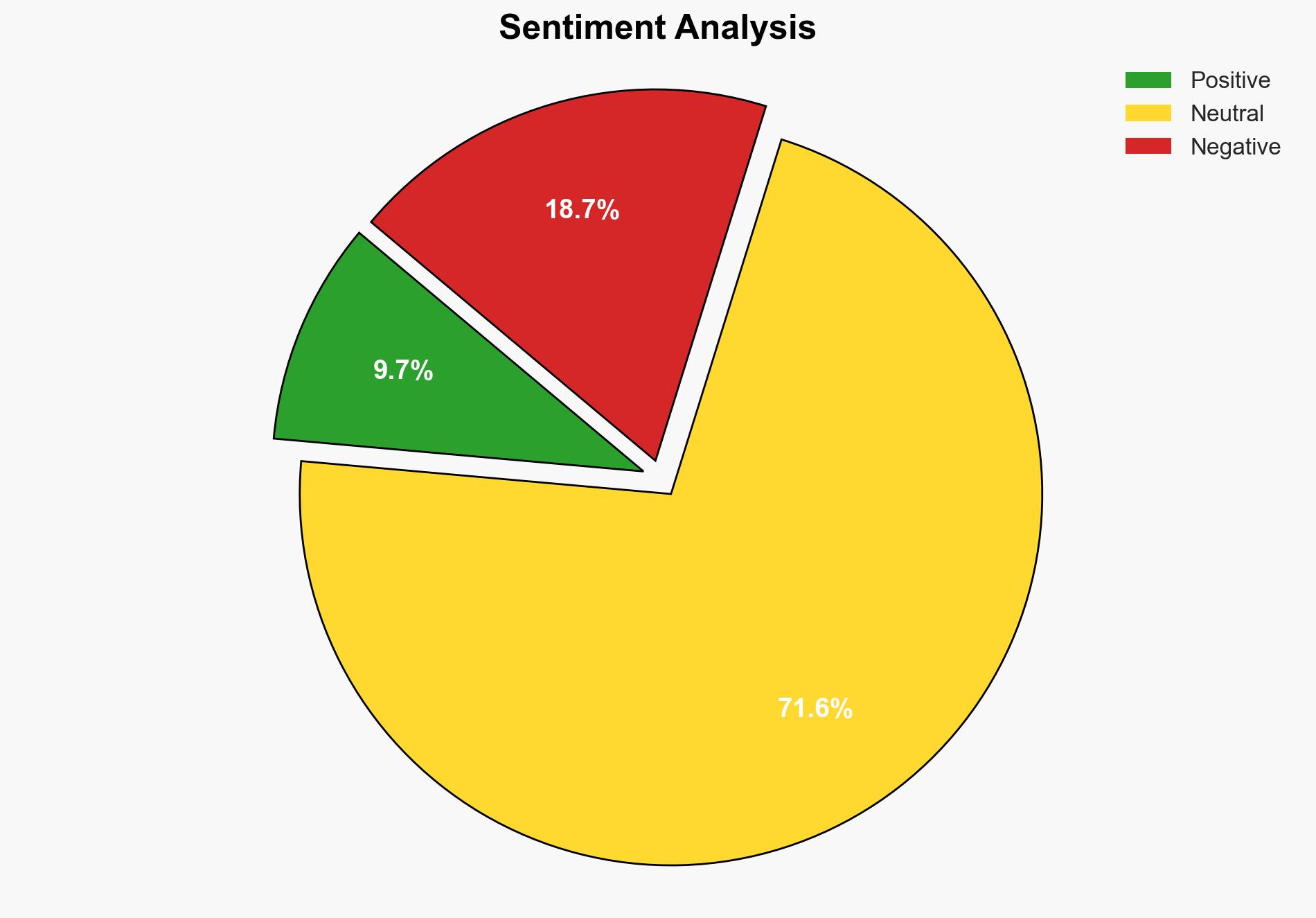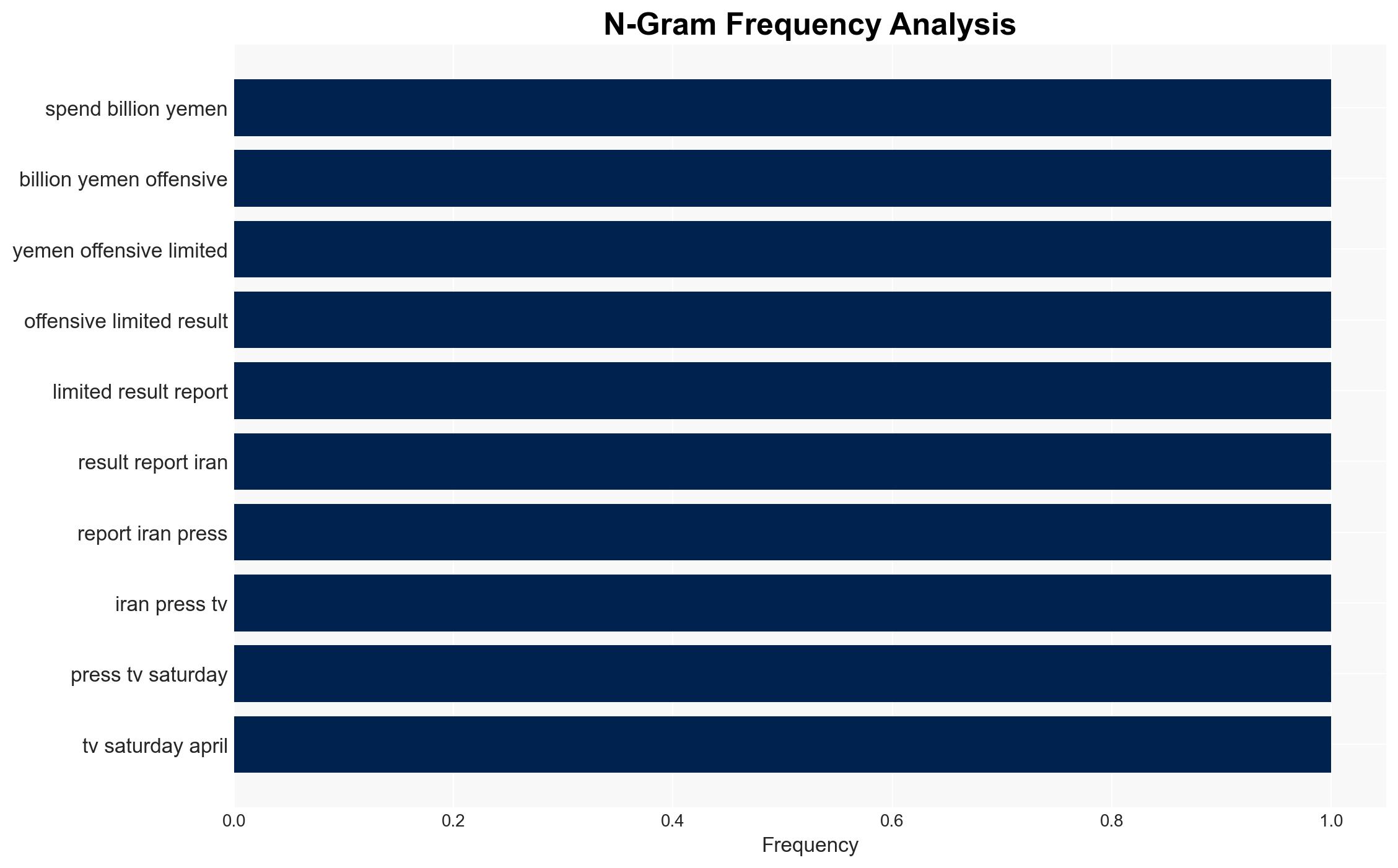US spent 1 billion on Yemen offensive with limited results Report – Globalsecurity.org
Published on: 2025-04-05
Intelligence Report: US spent 1 billion on Yemen offensive with limited results Report – Globalsecurity.org
1. BLUF (Bottom Line Up Front)
The United States has expended nearly $1 billion on military operations in Yemen, achieving limited success in diminishing the capabilities of Yemeni armed forces. Despite significant financial and military resources, the offensive has not substantially weakened the Ansarullah resistance movement’s ability to conduct operations. The Pentagon may require additional funding from Congress to continue its efforts. The ongoing conflict has broader implications for regional stability and US strategic interests.
2. Detailed Analysis
The following structured analytic techniques have been applied for this analysis:
General Analysis
The US military’s offensive in Yemen involved the deployment of advanced munitions, including JASSM long-range cruise missiles, JSOW GPS-guided glide bombs, and Tomahawk missiles. Despite these efforts, the Yemeni forces, particularly the Ansarullah movement, have maintained their operational capabilities. The resistance has continued to target ships in the Red Sea and support Palestinian operations against Israel. The strategic deployment of US assets, such as bombers and aircraft carriers, has not significantly altered the conflict’s dynamics.
3. Implications and Strategic Risks
The limited success of the US offensive in Yemen poses several strategic risks:
- Potential for increased regional instability, affecting maritime security in the Red Sea and Gulf of Aden.
- Escalation of hostilities could draw in additional regional actors, complicating diplomatic efforts.
- Economic implications due to potential disruptions in shipping lanes and increased military expenditures.
- Risk of further entrenchment of Yemeni resistance forces, complicating future military and diplomatic efforts.
4. Recommendations and Outlook
Recommendations:
- Reassess current military strategies to enhance effectiveness and reduce unnecessary expenditures.
- Engage in diplomatic efforts to de-escalate tensions and seek a political resolution to the conflict.
- Consider technological advancements to improve intelligence and operational capabilities.
Outlook:
In the best-case scenario, diplomatic efforts lead to a ceasefire and eventual peace negotiations. In the worst-case scenario, continued military engagement results in further regional destabilization and increased costs. The most likely outcome involves a protracted conflict with intermittent escalations and continued US involvement.
5. Key Individuals and Entities
The report references several key individuals and entities involved in the conflict:
- Joe Biden
- JD Vance
- Abdul Malik al Houthi
- Ansarullah resistance movement
- Pentagon





